Racial segregation in every sphere of life is what was typical for the 19-20th-century history of the United States, and school education was not an exception. It was not until the 1954 Brown vs. Board of Education that the US Supreme Court declared separate public school education for black and white unconstitutional. Becoming a turning point in the history of desegregation, importance of Brown vs. Board of Education cannot be underestimated. It had numerous social implications and has met a wave of criticism and praise resulting in social upheavals and fundamental shifts in the black-white public relations.
The topic of school desegregation is worth being presented to the public because it is a good reminder that some sixty years ago schooling, as well as life in general, was separated on the basis of race, and the racial gap was gigantic and the phenomenon referred to as white privilege had extremely strong impact on everyday life of Americans. Even today, in some urban areas of the United States, schools are segregated. A way chosen for presenting exhibition is finding out the level of visitors’ knowledge on the topic by asking some questions on primary events of the desegregation process and current developments in this sphere thereafter presenting some interesting facts on the topic, namely historical background for initiating the process of desegregation, primary legal acts lifting it and implications it had on everyday life and developments in public relations. The viewers will see pictures, caricatures, posters, and copies of legal acts and read representations to them so that they will get maximum useful information and additional knowledge on the topic of racial segregation in the United States history.
Historical Background of School Desegregation
Before the ratification of the Thirteenth Amendment to the U.S. Constitution in 1865 the black people were slaves. Though not all black were slaves, up to 1868 Fourteenth Amendment and 1870 Fifteenth Amendment they were not considered to be equals to the white people in everyday life as well as before law.
In 1849, the Massachusetts Supreme Court in Roberts v. City of Boston enacted that school segregation is legal according to provisions of the state’s constitution that would become the legal basis for “separate but equal” doctrine legalized by 1896 Plessy v. Ferguson Supreme Court Decision authorizing “white supremacy and black inferiority” (“Brown v. Board: Timeline of School Integration in the U.S.” par. 10). Further segregation was legitimized by the Supreme Court’s requirement towards colleges to operate on the basis of racial separation (1908 Berea College v. Kentucky) and defining Chinese kids as colorful (1927 Gong Lum v. Rice) so that they could not attend public schools together with the whites (Davis 27).
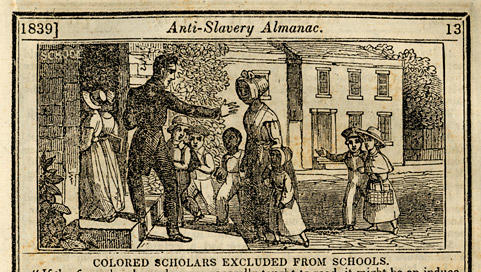
Brown v. Board of Education Enactment
By 1940, 30% of the American population was sure that public schools should be desegregated thus separate schools for blacks and whites should be closed, and children should attend newly created integrated schools. All over the country schools stated their desire to desegregate, and so, in 1954 the Supreme Court abandoned the Plessy decision and separate but equal doctrine and authorized Brown v. Board of Education enactment declaring that separate schools were unconstitutional, and they should be desegregated (“Legitimizing Race as a Decision Making Criterion: Where Are We Going?” 4).
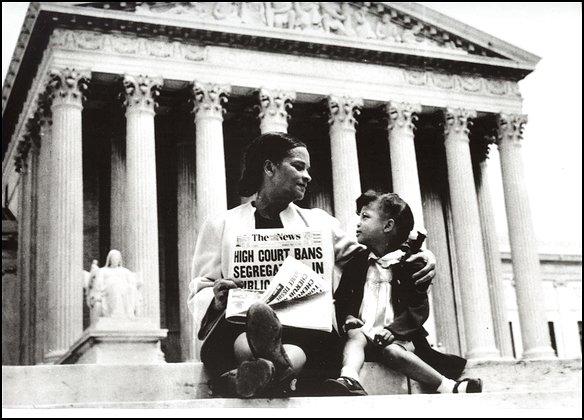
Social Implications of Brown vs. Board of Education Enactment
Reaching a decision to desegregate public school was an accomplishment of great significance, but it was not accepted positively in some states, especially in the South of the U.S., and resulted not only in integration of schools but also in a wave of social upheavals:
The plaintiff’s victory in Brown v. Board of Education was a landmark in the movement that began with resistance to slavery and continued after emancipation as resistance to surviving ideologies of color. (Davis 43)
Even though it was a legal act, it took long years for the schools to integrate. During the first years of its operation, black students were kept from attending so-called integrated schools all over the country. Indignant with the slow speed of integration of schools thousands of people arranged Civil Right Marches in Washington, D.C., with the primary claim of opening integrated desegregated schools all over the country and equal rights to education. The enactment even initiated the burst of the new wave of violent activities of the Ku Klux Klan, the secret organization known for preaching white nationalism and white supremacy, activities.
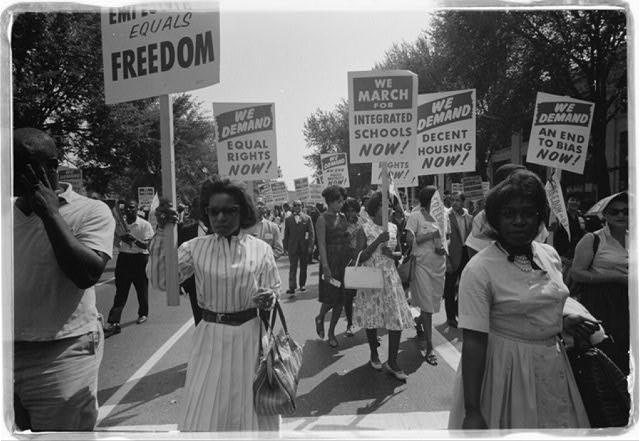
It was not until 1964 that the Federal Government adopted Civil Rights Act prohibiting racial discrimination and school segregation (“Brown v. Board: Timeline of School Integration in the U.S.” par. 47). The Supreme Court kept on combating segregation by adopting legal acts prohibiting creating splinter districts for white people, providing segregated schools with textbooks and state education expenditures and using race as a criterion for admission to education. In 1955, the Supreme Court decided to return the right to control desegregation to local authorities and in 2003, it declared that racial diversity is of significant importance to effective education (“Brown v. Board: Timeline of School Integration in the U.S.” par. 69, 73).
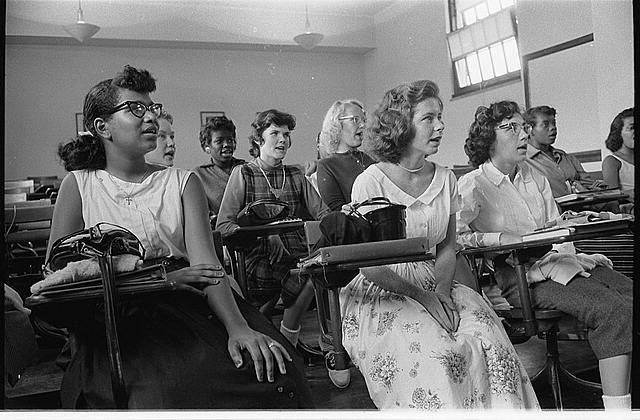
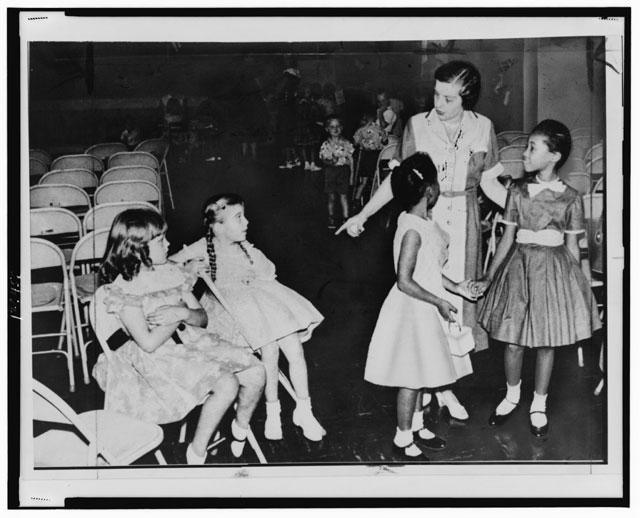
Significance of School Desegregation
The significance of school desegregation cannot be underestimated. First of all, it is of great importance for further establishing of racial justice in the country because in the case of studying in multiracial classes and integrated schools kids from the very childhood learn that all people are equal no matter what they skin color is. Second, attending integrated school is good for mental health of both white and colorful people because it helps eliminate social hostility towards people of other races, improve social interactions and establish racial and ethnic harmony in the society (“The Continuing Challenge: The Past and Future of Brown v. Board of Education: A Symposium” 91).
Moreover, studying in desegregated schools increases the level of overall knowledge because schools for racial minorities are usually less provided with textbooks and other necessary resources than schools for whites. So, when going to integrated schools kids of colorful minorities have better access to education and as the result the number of poorly educated people in the society decreases (“Brown v. Board: Where Are We Now?” par. 11).
So, people should be reminded of the significance of school desegregation whenever it is possible and arranging an exhibition on this topic can help improve people’s knowledge in this field. Visiting such an exhibit one besides becoming more intelligent can become more tolerant when it comes to racial and ethnic diversity and realize that no person is better than another because we all are equal in the court of law and before each other.
Works Cited
“Brown v. Board of Education: Where Have We Been, Where Are We Now, and Where Are We Going” n.d. Web.
Brown v. Board: Timeline of School Integration in the U.S. 2004.
Brown v. Board: Where Are We Now? 2004.
“Civil Rights March in Washington” 1963.
The Continuing Challenge: The Past and Future of Brown v. Board of Education: A Symposium. 1975.
Davis, Peggy. “Performing Interpretation: A Legacy of Civil Rights Lawyering in Brown v. Board of Education.” Race, Law, and Culture: Reflections on Brown v. Board of Education. Ed. Austin Sarat. Oxford, England: Oxford University Press. 1997. 23-48. Print.
“An Integrated Classroom at Anacostia High School, Washington, DC” 1957. Web.
“Integrated Classroom in Nashville” 1957. Web.
Legitimizing Race as a Decision Making Criterion: Where Are We Going? 1983. Web.
“Roberts v. City of Boston” n.d. Web.